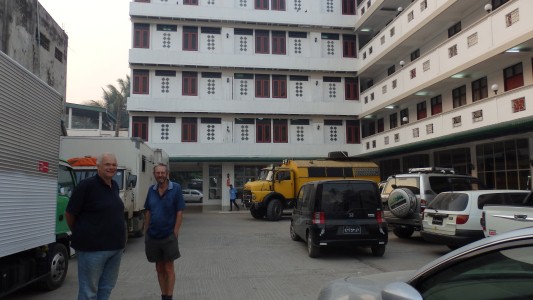
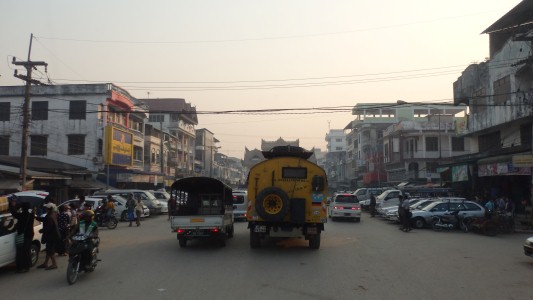
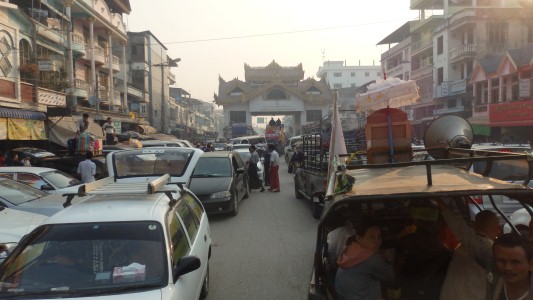

Unfortunately the bridge is blocked with traffic. A few cars left overnight had no drivers.
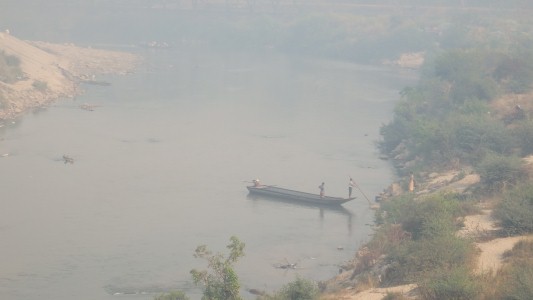
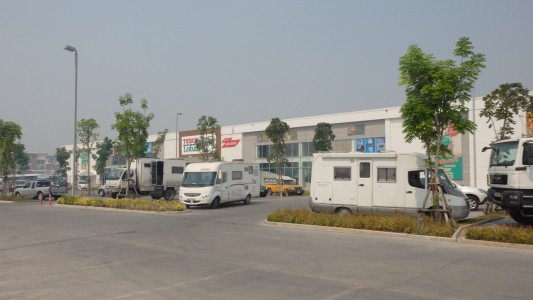
The somewhat aggressive immigration clerk demanded an address in Thailand.
I hope she doesn't try to contact us there!
Customs for the carnet stamp was fascinating to watch as a very efficient young lady juggled requests from the throng around the window and the constant stream of paper from a computer printer.
A bit of eye contact and some long arms had her add our carnet to the stream. She somehow also managed to organise the copies of documents she needed.
First stop Tesco in Mae Sot, after about 5km.
Heaps of ATMs, supermarket, sim card.

Pristine US dollar bills are sought after. All else apparently refused. Only some bank branches are authorised to change money.
However, we changed our Indian Rupees (a lot because we couldn't buy diesel in Moreh) easily on the street and paid for everything in local currency.
There was an ATM in every major town we passed through. We used a couple.
We are now on Thai standard roads. An easy 70 - 80 km/hr on the sensible (left) side of the road.
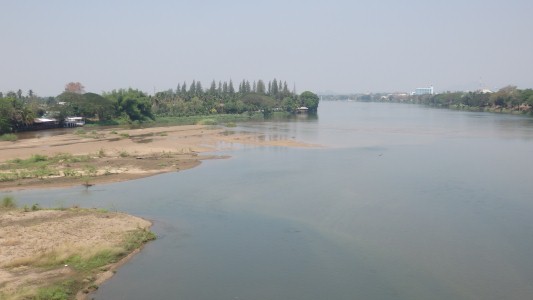
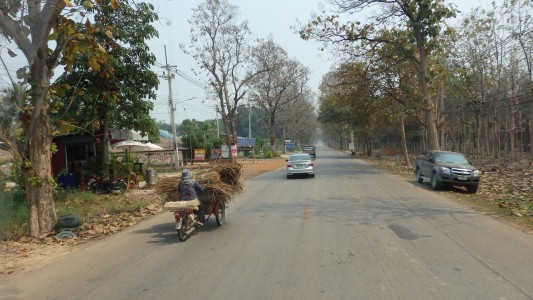
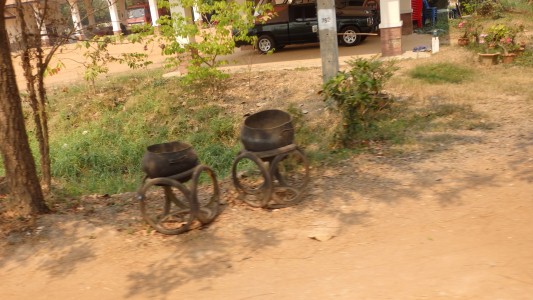
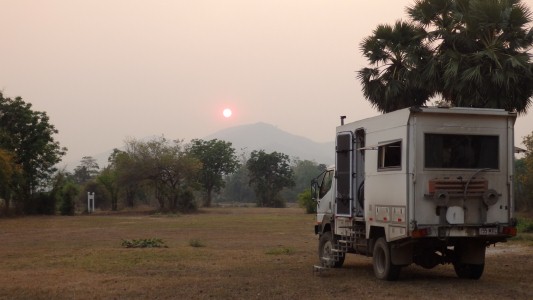
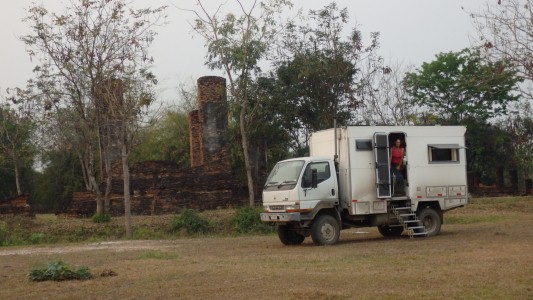
The wat, not the truck.
The truck is not a wat.
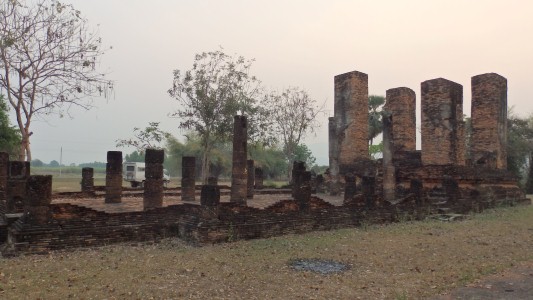
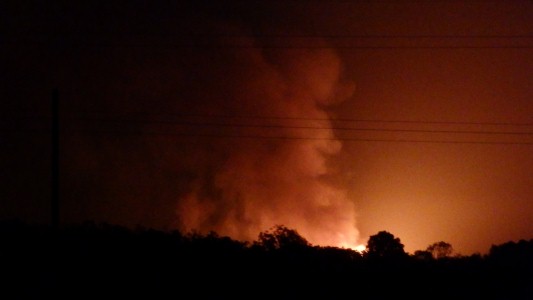
Burning the sugar cane stubble.
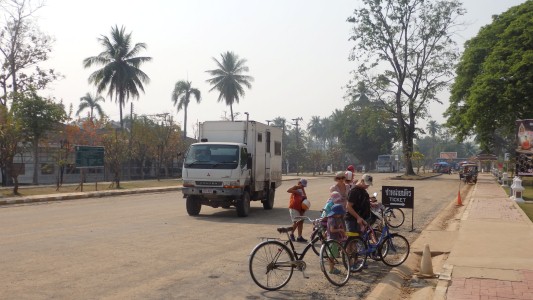
A few people on bicycles.
And us.
Just a thought that the pain in both upper arms and fingers may be more like "rsi" than a herniated disc I thought it time to share the driving a bit.
Truck drivers seem to suffer, a result of the slight pressure required to keep the vehicle straight on a cambered road.
Regardless, its excuciating at about 3am after lying still. The panadeine are helping. Makes me very careful about moving!
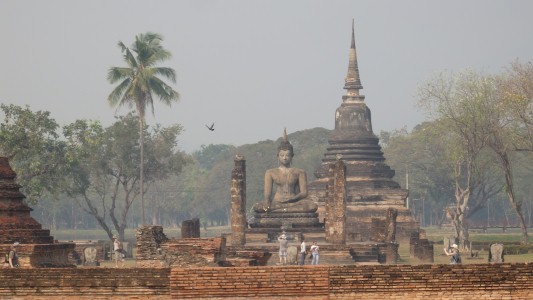
The bell shaped chedi (stupa) has Sri Lankan origins.

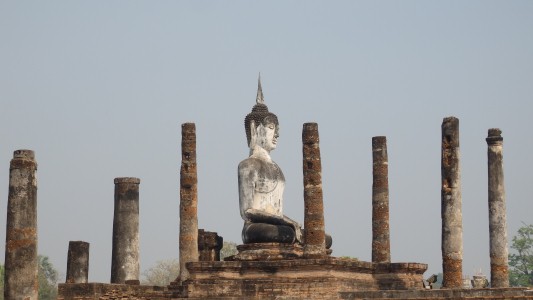
There is an ordination hall as part of the complex.
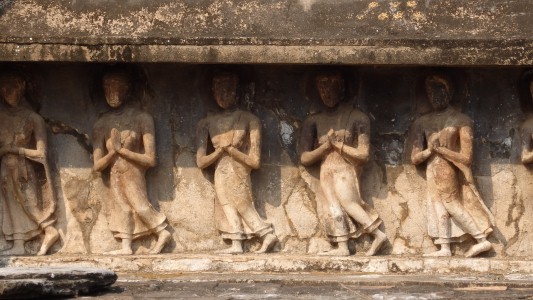
All walking in the same direction.
Some chedis have a base, others none. Some have terraced bases.
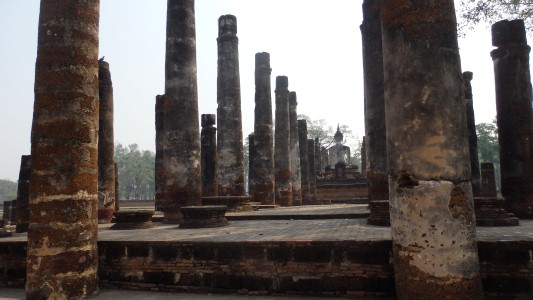
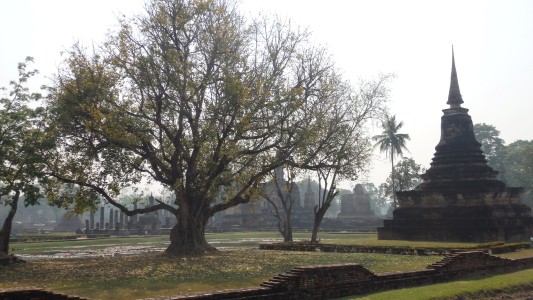

This is Wat Tra Phang Ngoem.
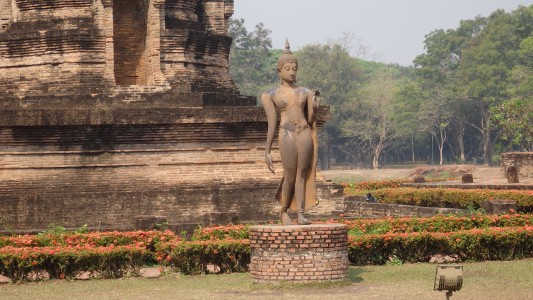
In Myanmar when we asked for Sa Si we received cooking oil.
This capital went into decline following a 15th century (?) invasion by the Burmese.
SE Asia has seen a lot of "to and fro" between Burma, the Khmers, and peoples from the north.


There is some small Khmer influence but these temples and Angkor Wat are like chalk and cheese.
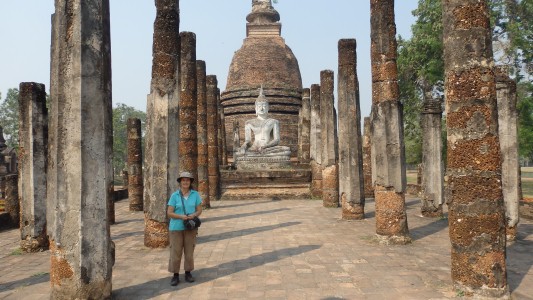
There are Buddha images remaining.
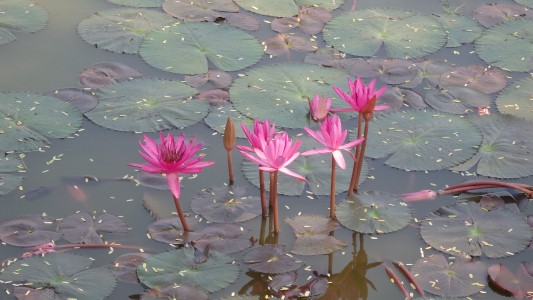
Lotus flowers.
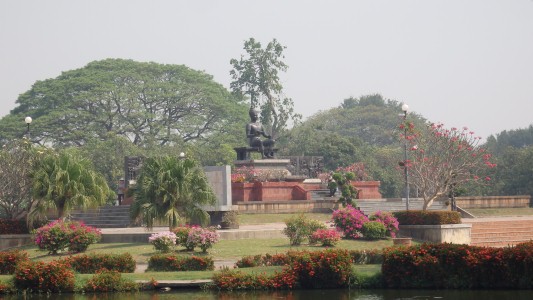
A recent addition.
He deserves a bit of credit for creating the historic park from overgrown ruins.
In 1990 entry fee was 20 Baht for each of 5 zones. Today it is 100 Baht and little evidence of more than one zone.
Which suits our camping.

So we did.
We felt we deserved it.
In common with most overland travelers we find the highlights are interspersed with a never ending string of "problems" to be solved.
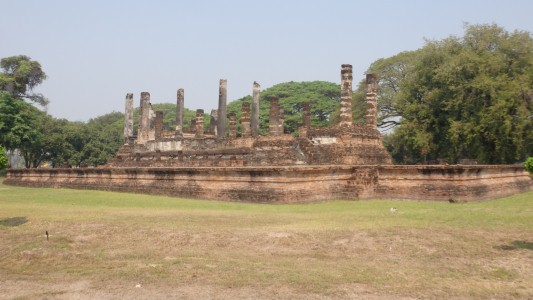

There were more in the museum, but no photos.
The historical park, and the museum, are devoted to the factual bit of what the archeologists have discovered.
From all the lakes around, and these pipes, we suspect there was a sophisticated water management system. But no mention of this, or life in the city.
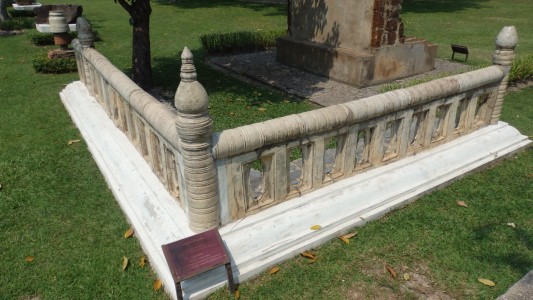
The model of the area suggested only wooden houses.

This is not one of the original gates.
Opened up for a road.
Three concentric walls with narrow moats between them.
After a quick banana smoothie and some noodles we headed back to our campsite to rest during the heat of the afternoon.
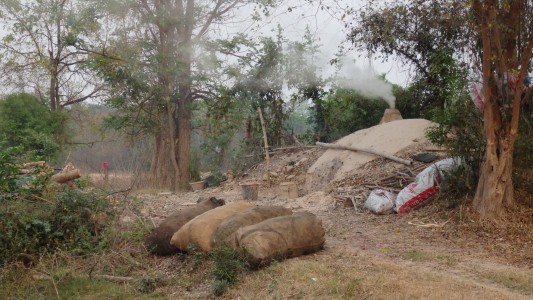
Lots of small birds singing in the trees. We caught occasional glimpses.
Plus a working charcoal kiln, with smoke blowing away from us.